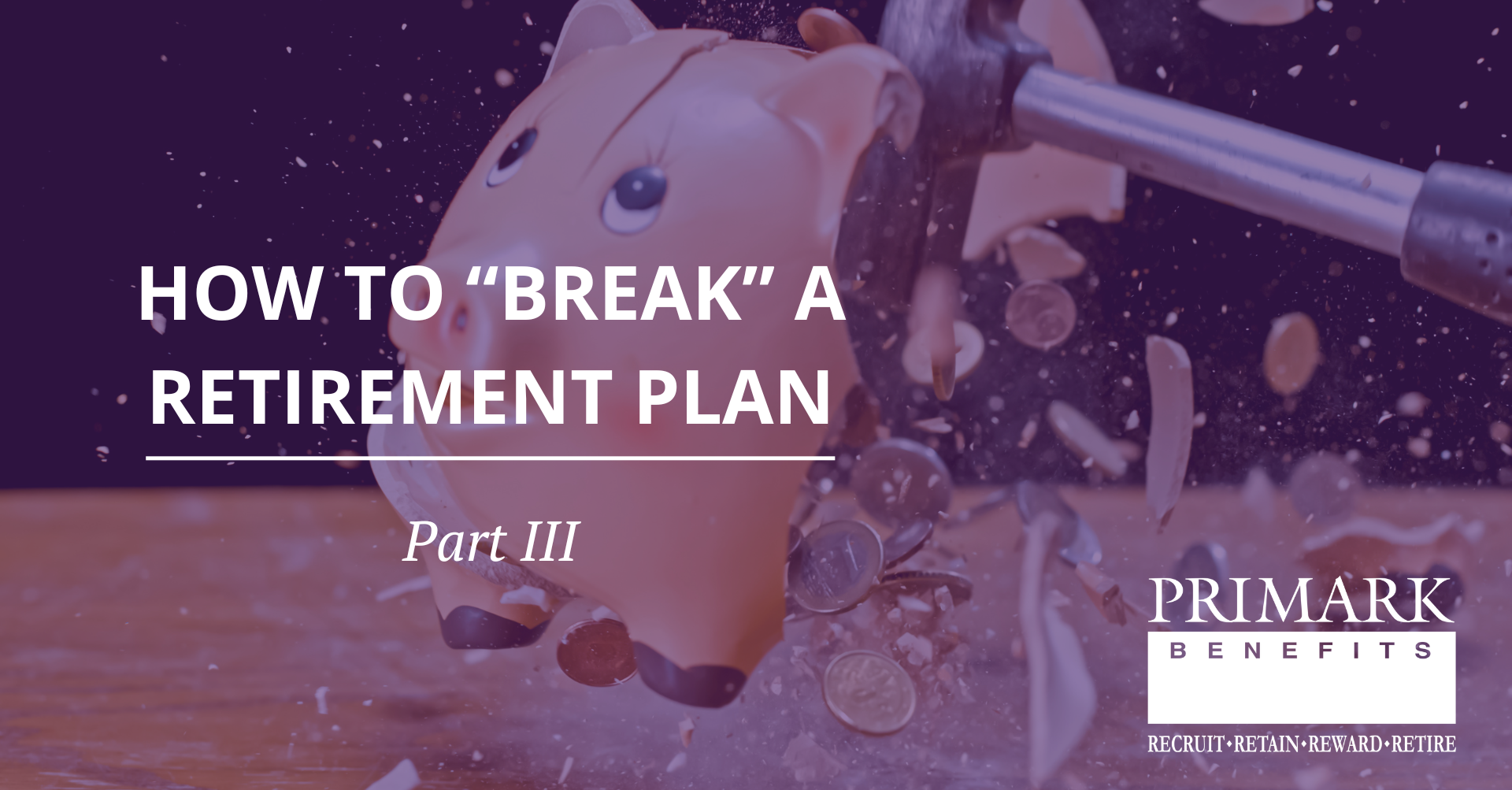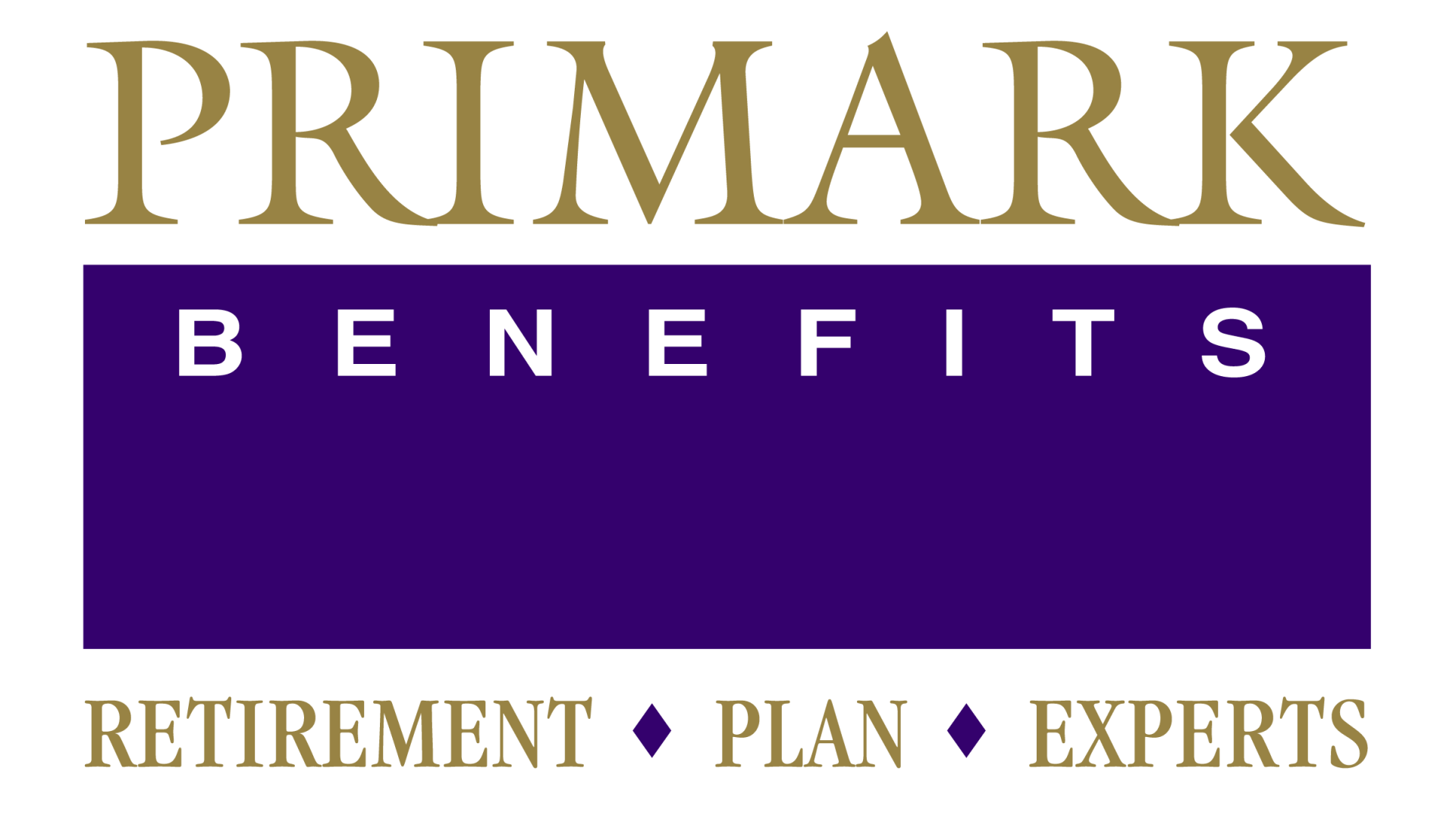Case Study: How Plan Design Improved Participation Rates and Compliance
Many companies, especially in the professional services sector—law firms, staffing agencies, engineering and consulting companies, healthcare groups, etc.—are often made up of various employee tiers. For example, in a given company, you might find partners or executives in one segment, professional staff in another, and support staff or hourly workers in yet another.
While this tiered structure works well operationally, it can pose challenges relating to retirement plan compliance. In one recent example, the Primark Benefits team helped a client with over 3,500 employees overcome a complicated compliance issue by strategically changing the plan design, first expanding eligibility and then implementing automatic enrollment. Let’s take a look.

The Compliance Challenge
In the pension industry, retirement plan testing rules exist primarily to ensure plans don’t disproportionately favor Highly Compensated Employees (HCEs) (which for 2025 is defined as most owners and anyone earning more than $160,000). These tests are crucial for maintaining the qualified status of a retirement plan, not to mention avoiding potential penalties or corrective actions.
Two such tests are the coverage test and the Actual Deferral Percentage, or ADP, test. Briefly, the coverage test reviews which employee segment(s) are covered by the plan, while the ADP test reviews employee deferral rates. When an employer includes only some employee segments in their retirement plan while excluding others, the plan has a higher chance of failing these tests, creating an administrative burden and budget headache for the employer.
One of Primark Benefits’ clients is a staffing, or “temp”, agency. The company employs 3,500 people, divided into two distinct groups of workers: temps, who are placed on external client assignments, and internal back-office staff, who average a longer company tenure than the temp population. For years, only the office staff were eligible to participate in the 401(k) plan; temp workers were excluded.
This tiered structure created a persistent plan compliance issue. Because the plan covered only a small portion of the total workforce, advanced analysis and additional testing were required each year to ensure the plan passed the coverage test.
First Recommendation: Expanding Eligibility
To address this, we recommended expanding eligibility to include the temp workers, which the company elected to do two years ago. This was a big win from a coverage standpoint, as including everyone in the plan resolved many of the testing concerns tied to eligibility.
However, it introduced a new issue: while all employees were now eligible to participate, many of the temp workers who are typically not Highly Compensated Employees) chose not to defer, lowering the overall rate of employee contributions among this group. We often see this occur in employee segments that have relatively lower or more intermittent earnings. When it does, the plan is at risk of failing the ADP test. This in turn can result in corrective distributions (refunds) being required to some employees, potentially undermining their retirement savings goals.
Second Recommendation: Add Auto Enrollment
To get ahead of this, our team recommended implementing automatic enrollment, as opposed to requiring employees to actively select enrollment as an option. Nationally, auto-enrollment has increased participation in retirement plans, especially among employee groups that might not otherwise take action. It’s not just a compliance strategy: it’s a way to ensure more employees are saving for retirement, with minimal friction.
Proactive adjustments like auto enrollment are especially valuable in dynamic workforces, such as staffing or seasonal industries, where high turnover and variable hours can otherwise make participation (and therefore maintaining compliance) a persistent challenge.
Early Results and Next Steps
Implementing our recommendations is already paying off. With a full year of auto-enrollment now under the client’s belt, the early data looks promising: Participation rates among newly eligible employees—especially those in traditionally lower-participating groups—have increased sharply, and next year’s ADP test result is projected to improve dramatically. Their actions not only boosted plan compliance; they also support broader retirement readiness across the workforce. That’s a clear success in our book.
Exploring Additional Recommendations
We're also working with the client on a few additional advanced strategies to further support compliance and flexibility:
- Potential plan restructuring: We’re exploring the possibility of carving out a subset of employees into a separate retirement plan. When appropriate, this approach can allow for more tailored plan features—such as different eligibility rules, contribution formulas, or vesting schedules—that better align with the needs of each employee group. It can also improve nondiscrimination test results by reducing demographic imbalances that commonly occur in mixed-employee populations.
- Non-Qualified Plan options: If HCE refunds remain an issue, a Non-Qualified Deferred Compensation (NQDC) plan could offer a way for those employees to continue deferring income, even if the 401(k) limits are reached. While NQDCs don’t offer the same tax benefits as qualified plans, they still provide value—especially for retaining and rewarding key employees. We’ll discuss this complex topic in a future blog article.
Takeaways
For employers navigating complex workforce structures, staying ahead of nondiscrimination testing isn’t just about passing IRS rules—it’s about delivering a functional, equitable retirement plan that meets business goals and employee needs alike.
This case is a great example of how adjustments to plan design can have a big impact. When done thoughtfully, these changes can increase participation, improve compliance, and create a better retirement plan experience for everyone involved.
The team at Primark Benefits has the track record of success and deep expertise in working with complex plans and delivering unique solutions. Contact us to learn more.




